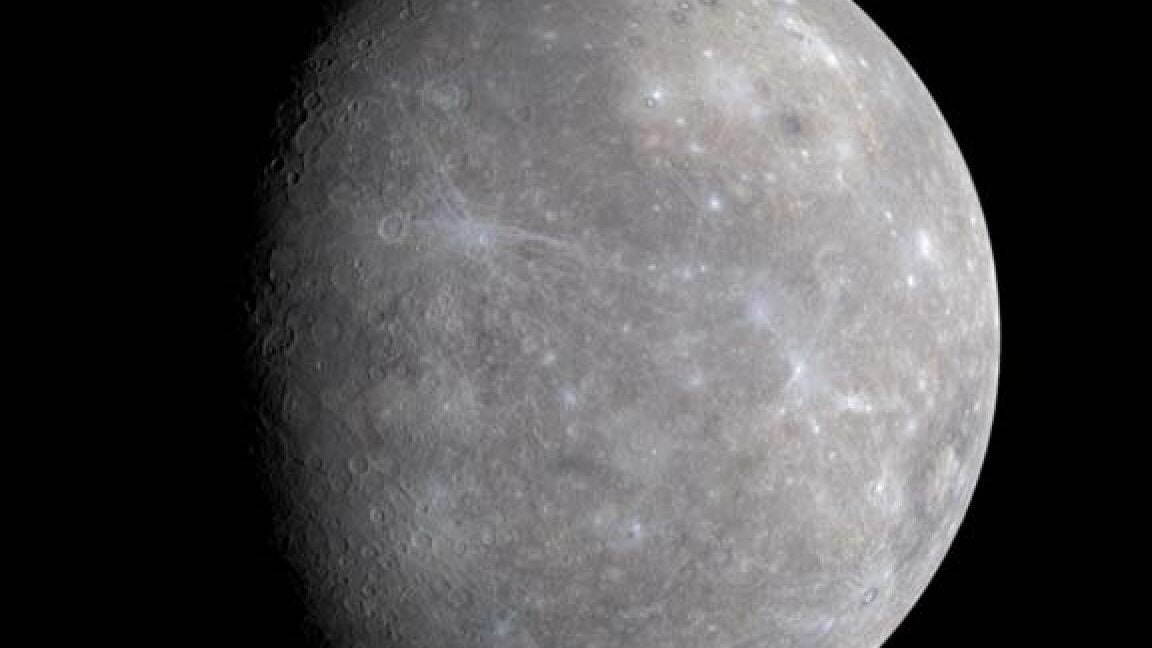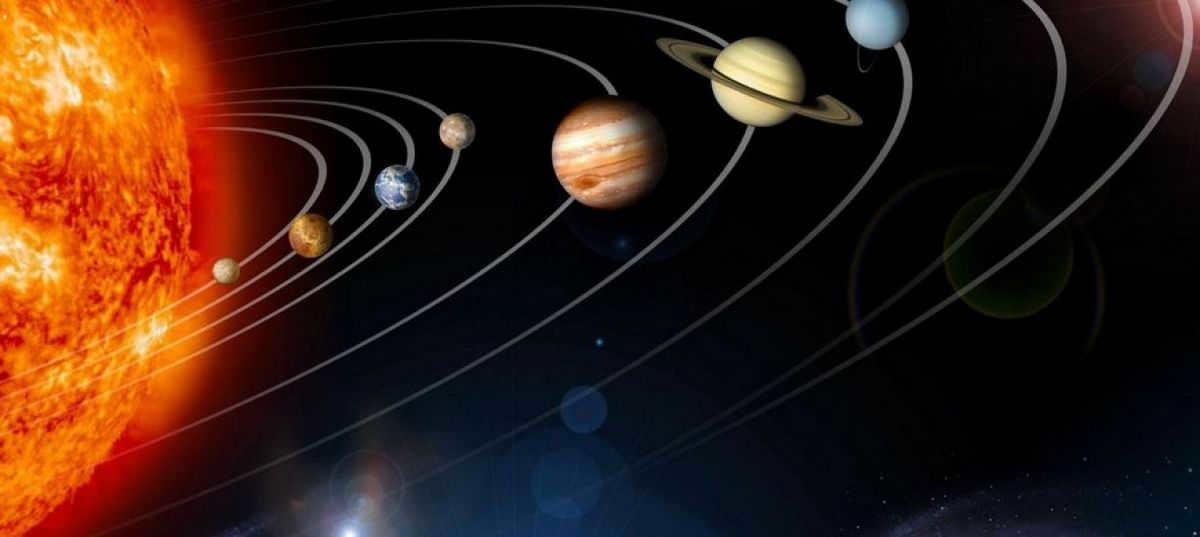
When observing the planets within our solar system without the aid of telescopes, their colors are indistinguishable. The planets appear as tiny specks, barely recognizable as celestial bodies. To truly appreciate the colors of the planets, one must turn to real photographs captured by telescopes, as even the images found in astronomy textbooks fall short of depicting the reality. Let us delve into the actual colors of the planets and explore the reasons behind their vivid hues.
Mercury’s Gray Color
To discover the hue of Mercury, simply observe our celestial neighbor, the Moon. Both the planet and Earth’s satellite possess a lackluster gray shade. However, unlike the Moon, Mercury does not exhibit dark lunar spots.
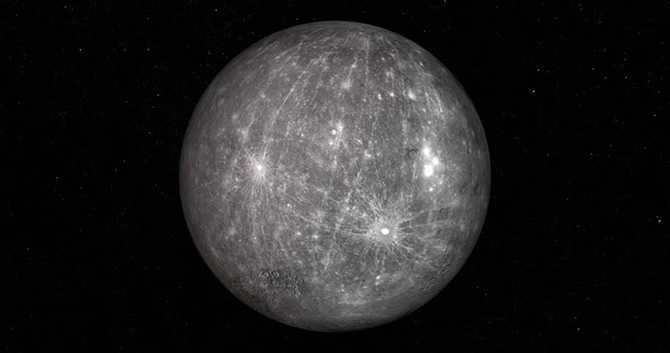
What is the reason behind Mercury’s gray appearance? There are multiple factors contributing to this. The primary and most evident factor is the planet’s complete coverage of solidified lava, which erupted from its core during intense tectonic activities in the past. Presently, Mercury’s core is relatively placid, but it still experiences meteorite bombardment, resulting in the formation of numerous craters on its surface.
Another factor causing the gray hue is the absence of an atmosphere. Without air to distort the true color of the planet, the sunlight is not scattered, leading to its grayish appearance.
When viewing Venus from our planet, it presents itself as a radiant and luminous white glow. It has even earned the moniker “the morning star” due to its appearance before the break of day.
However, it is important to note that Venus is not truly white and is definitely not a star (for those who may have wondered). Thanks to the aid of space probes, we have managed to capture authentic images of Venus, providing us with a genuine understanding of its actual hue.

In order to truly observe its appearance, vehicles had to capture images using various light wavelengths, as the thick atmosphere of Venus greatly distorts reality. This allowed for the discovery that the color of Venus, due to its acid clouds, varies from yellow to red. However, this observation is also influenced by distortion and the effects of computer photo processing. In reality, Venus has a more subdued natural color, appearing as a pale yellow with a dark red surface that is dotted with numerous active volcanoes.
The Blue Planet
Blue Earth is a fitting name for our planet, as it is predominantly covered in water. With a greater expanse of oceans than land, the Earth takes on a blue hue, with hints of green where the continents emerge. However, as one moves further away from the planet, the land masses become indistinguishable, leaving only a light blue glow.
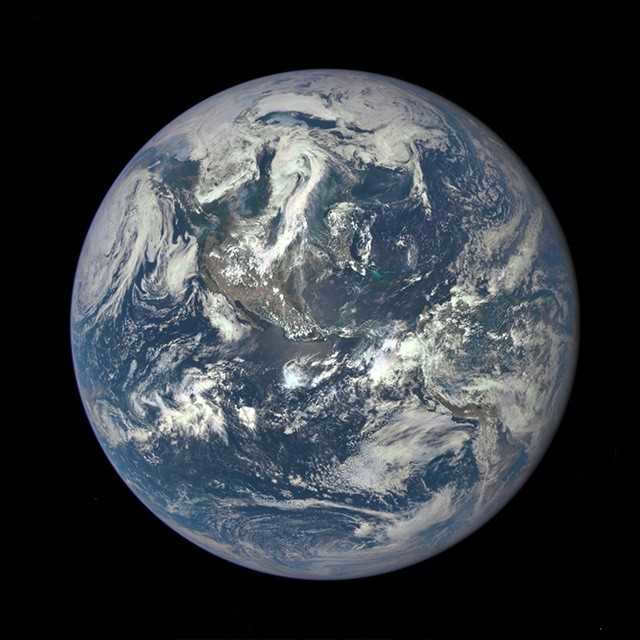
The Earth acquired a blue color not only due to the presence of a large amount of water, but also because of its atmosphere. The planet’s air shell scatters sunlight evenly, resulting in the blue hue that we see.
Mars – A Planet in Shades of Brown
Mars is often referred to as the Red Planet because of the presence of large clouds of mineral dust that hover over its surface. This is why Mars appears reddish in many images taken from space. However, photographs captured by Mars rovers provide us with a glimpse of the true color of the planet’s surface. In reality, the soil on Mars is not as bright as it appears, but rather a shade of yellow-brown and even brown.
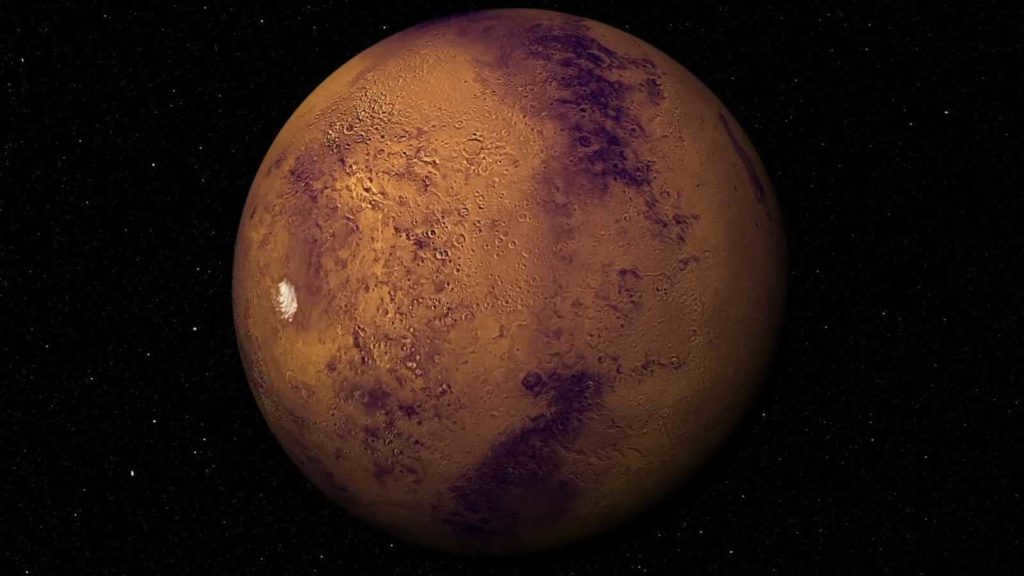
Fluctuating Jupiter
What is the hue of Jupiter? It is variable. It relies on the intensity of the cyclones and the filters employed to capture images. Jupiter is likely recognizable to you for its bands and dots on a pale backdrop.
That is the color bestowed upon it by the planet’s atmosphere. However, hues can shift due to atmospheric instability, altering wind velocities, and more. Even Jupiter’s most renowned feature, the Great Red Spot, which was initially observed in the 17th century, is progressively transitioning to a lighter shade, morphing into orange.
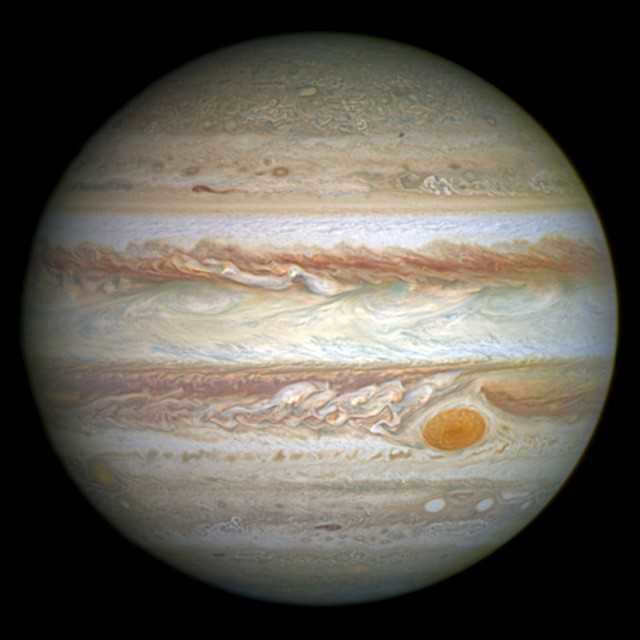

Faint Saturn
Similar to Jupiter, Saturn possesses a pale appearance due to its atmosphere, which exhibits a range of streaks. However, these streaks are not as distinct as those found on the largest gas giant in our solar system. As a result, Saturn appears more uniform in color, with a pale yellow tint.
The planet’s rings also possess their own distinct hue. Comprised predominantly of ice and dust particles, the rings appear mostly light blue in color. Additionally, there are red specks present on the rings due to the presence of silicate materials. These specks can appear gray or brown when captured using different filters.
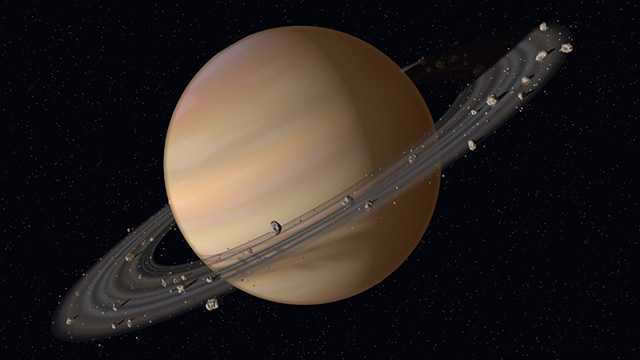
Frigid Uranus
Thanks to the aid of spacecraft, we have been able to ascertain the precise shade of even a planet as remote as Uranus. As one would anticipate, the planet possesses an icy green-blue tint. It is akin to the shade that our Earth would exhibit when observed from afar. The bluish-green hue of Uranus can be attributed to the high concentration of methane in its upper atmosphere.
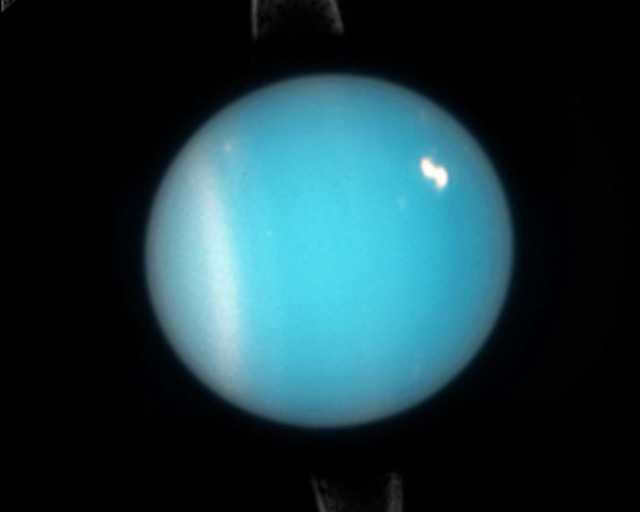
Neptune: The Blue Wonder
Similar to Uranus, Neptune gets its striking blue color from its high methane content. However, Neptune’s blue hue is even more vibrant. This is because the planet is also rich in other organic compounds that absorb yellow and red light, intensifying its blue appearance. Additionally, Neptune boasts darker spots caused by massive vortices that sweep through its atmosphere.
When we gaze at the night sky, we can observe various planets in our solar system. Even with the naked eye, we can distinguish their distinct colors, despite their star-like appearance. For instance, Mars and Jupiter appear reddish, while Saturn appears white.
However, if we were to approach the planets in our solar system, what color would they appear to be? Surely, one color must dominate among them. Indeed, each planet possesses a unique hue, and for various reasons. Let’s delve into this matter and begin with the first planet.
Mercury
Mercury exhibits a grayish color. This characteristic can be observed in all photographs taken of the planet. It is not due to the images being in black and white, but rather because Mercury is naturally gray, albeit in varying shades.
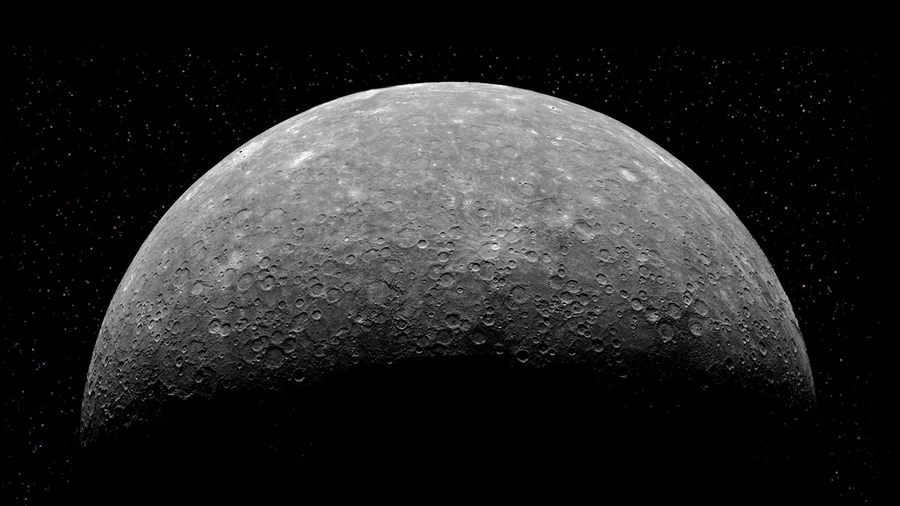
Mercury’s surface resembles the moon’s surface in many ways.
Mercury lacks a significant atmosphere, resulting in a rocky and crater-filled surface. It is possible for an inexperienced observer to mistake a photograph of Mercury for a moon due to their striking similarities in landscape and coloration.
Venus
Venus displays a combination of yellow and white hues. The image captured here showcases the upper layers of Venus’s dense and thick atmosphere, specifically the clouds within those layers. These clouds are primarily composed of sulfuric acid, which contributes to their distinctive “acidic” coloration. Unfortunately, the surface of Venus remains hidden beneath the thick layer of clouds.

A picture of Venus from space, captured by the Japanese spacecraft Akatsuki.
When observed from Earth, Venus can be seen as a radiant star with a gentle yellowish tint.
Planet Earth
Planet Earth is characterized by its light blue appearance, which has earned it the nickname “the blue planet”. Its unique color is not only due to the extensive coverage of oceans, which make up approximately 70% of its surface. Another contributing factor is the Earth’s dense atmosphere, which causes the refraction of light. As a result, red rays are absorbed while blue rays are able to pass through freely.
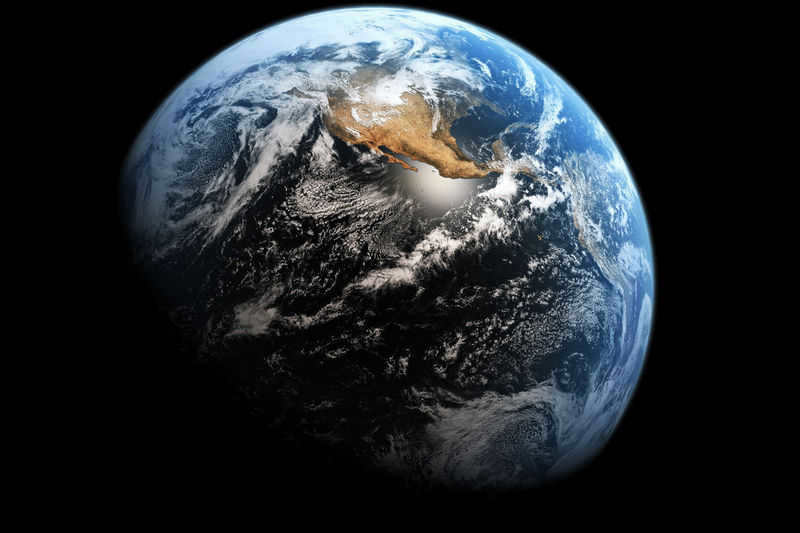

The reason the sky appears blue is because of the way our atmosphere scatters sunlight. When sunlight passes through the Earth’s atmosphere, it is scattered in all directions by the gases and particles in the air. Blue light is scattered more than other colors because it travels in shorter, smaller waves. This is why we see the sky as blue during the day.
When viewed from space, the Earth is enveloped in a blue cocoon, thanks to the atmosphere. The sky appears light blue due to the presence of white clouds made up of water vapor. These clouds reflect sunlight, giving the sky a lighter hue. So, while the Earth may not appear pure blue from a distance, it is still known as the blue planet.
Mars is characterized by its red-orange color. The planet possesses a thin atmosphere, with minimal cloud cover. This atmospheric composition does not significantly impact the surface, which is dominated by various shades of red and orange. Consequently, Mars has gained the nickname “Red Planet” due to its distinctive appearance.
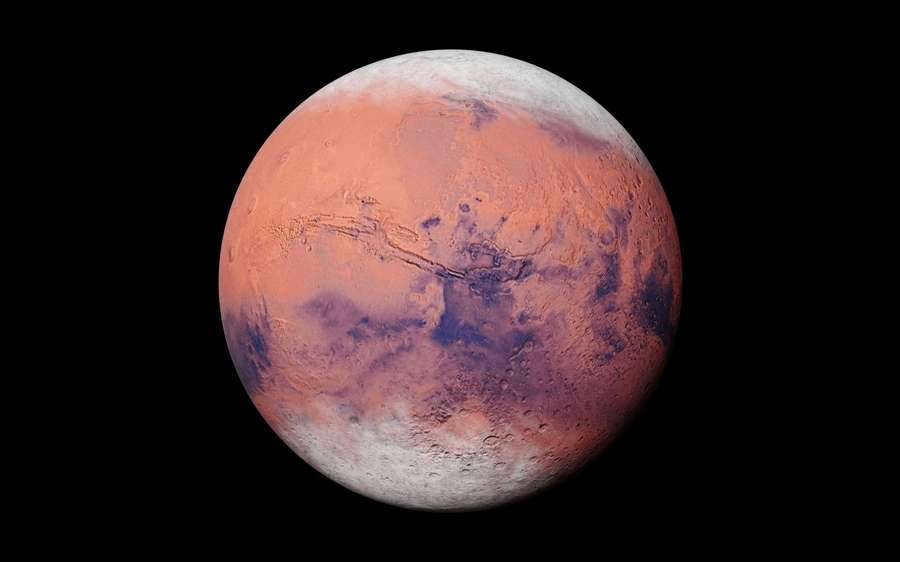

The reality is that the soil on Mars contains a significant amount of iron, specifically its oxides. These oxides are commonly known as red rust. Consequently, Mars exhibits a distinct reddish hue, similar to that of rust.
Occasionally, Mars experiences massive dust storms that envelop the entire planet. During these events, Mars takes on a consistent yellow-red appearance.
Jupiter
The primary color of Jupiter is orange, which is the celestial body visible in the sky of Earth. However, being a gas giant without a solid surface, we are only able to observe the upper layers of its atmosphere. These layers are distinguishable by distinct bands of orange and white hues. The orange bands are primarily composed of ammonium hydrosulfide clouds, while the white bands consist of ammonia. Therefore, the overall coloration of Jupiter is a combination of orange and white, with both colors being approximately equal in prominence.
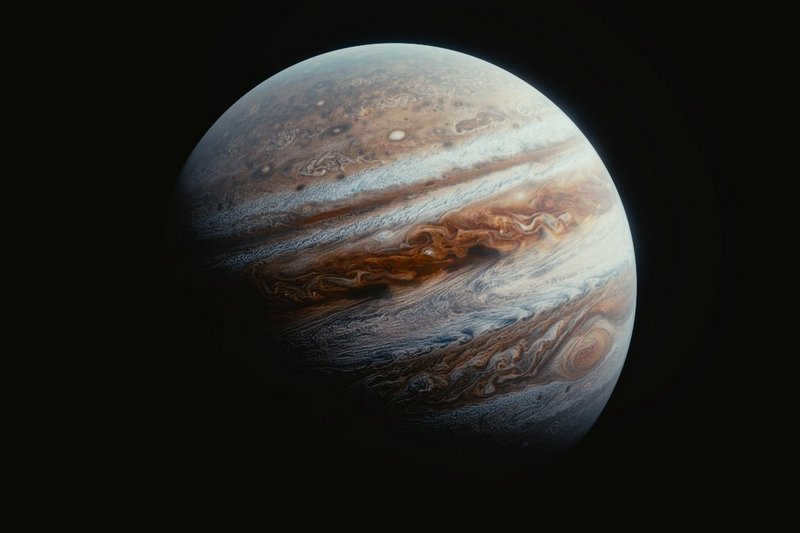
Jupiter, the biggest celestial body within our solar system, possesses the title as the largest planet.
Saturn
Saturn showcases a hue of pale yellow. Similarly to Jupiter, Saturn is classified as a gas giant, allowing us to solely observe its upper layers of atmosphere and clouds. Distinct from Jupiter, Saturn’s color bands are less contrasting and appear more blended.
Furthermore, the outermost layer of white clouds is composed of ammonia, which hinders our ability to discern specific details. This ammonia layer obscures the reddish layer beneath it. Consequently, the combination of the upper and lower layers generates Saturn’s light yellow color.
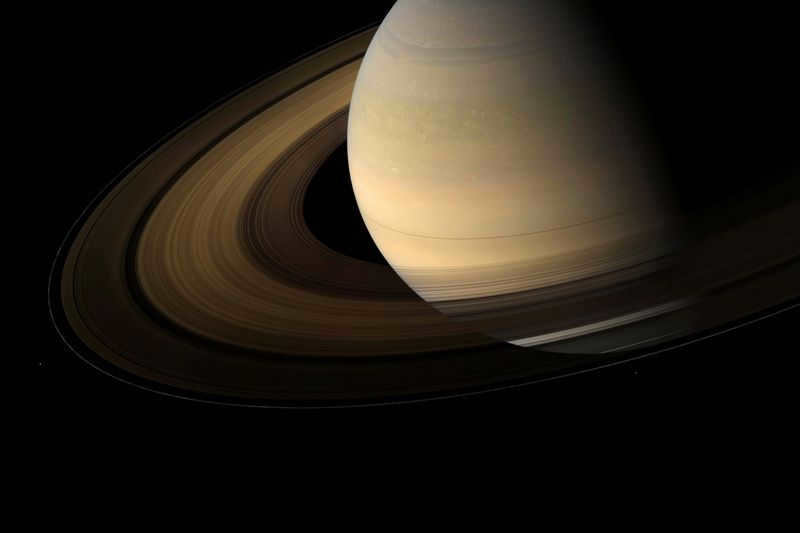
When we look up at the sky, Saturn appears as a bright star with a hint of yellow. However, when viewed through a telescope, Saturn takes on a beautiful light yellow color.
Uranus
Uranus showcases a stunning pale blue hue. As a gas giant, only its upper cloud layer is visible, which is composed of methane, giving it its blue color. The lower cloud layer is comprised of yellowish hydrogen sulfide and white ammonia clouds. While they can be faintly seen on the planet’s disk, they do not significantly impact its overall color. The layers below remain hidden from view.
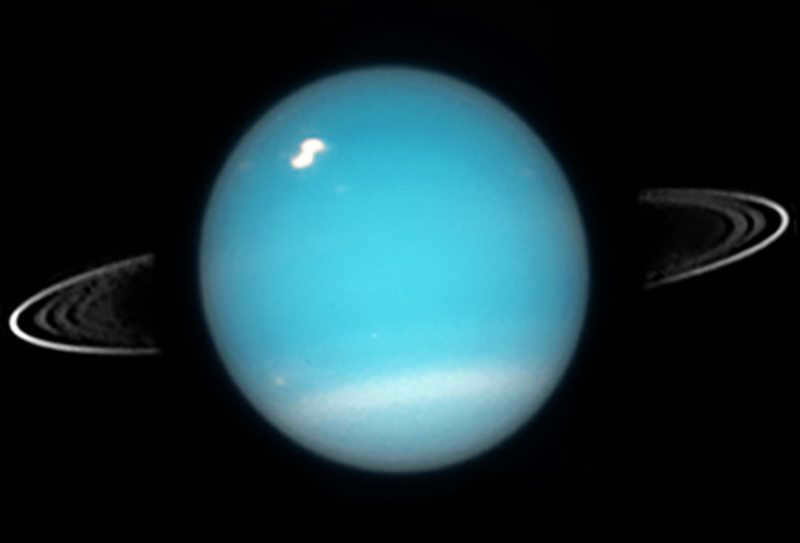
The reason why Uranus appears blue is because of the methane present in its atmosphere.
When observed through a telescope, Uranus also displays a blue tint. It can even be referred to as a “blue planet” similar to Earth.
Neptune possesses a pale blue hue akin to that of Uranus. The rationale behind this shared characteristic lies in the abundance of methane present in their respective upper atmospheres. The methane effectively absorbs red light, thereby granting us the perception of blue and cyan tones. However, when observing photographs, Neptune appears more vibrant and is situated closer to the true essence of the color blue.
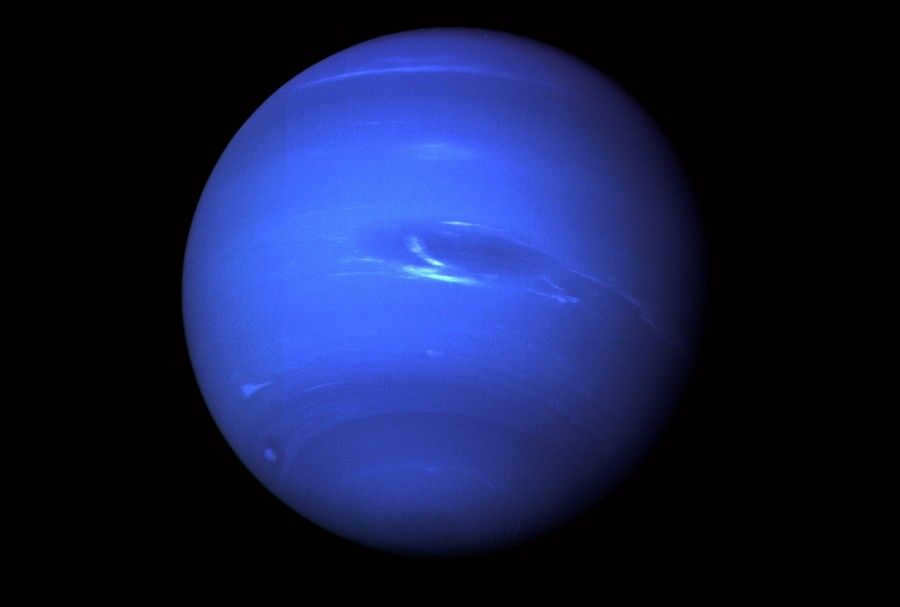
Neptune possesses a profound azure hue, verging on the shade of blue.
The rationale behind this lies in Neptune’s considerable distance from the Sun, resulting in its reception of significantly less light. Consequently, the blue color appears darker, nearly blue. Furthermore, it is plausible that within Neptune’s atmosphere, in addition to methane, there exists an unidentified element that also intensely absorbs red light, thereby enhancing the saturation of Neptune’s color.
The colors of the planets in the solar system – in summary
Displayed below are the primary colors associated with each of the previously mentioned planets within our solar system.
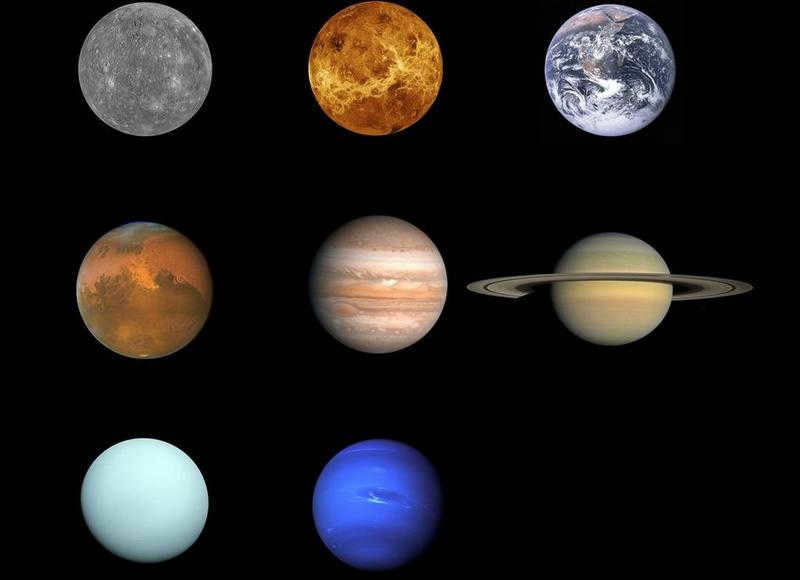
The planets in our solar system come in a variety of colors.
Mercury is a shade of slate gray, Venus appears pearly white, Earth stands out with its vibrant blue hue, and Mars is known for its dark red color. Even the gas giants have their own unique colors! Let’s explore what these colors reveal about each planet.
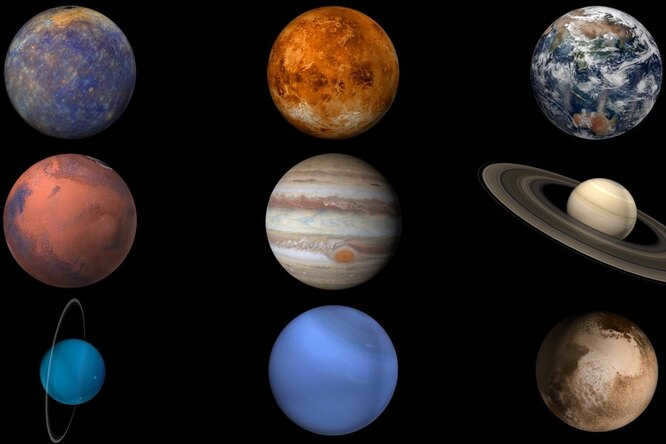
We are all aware that the appearance of a planet through a telescope may not always accurately represent its true colors. So what do these celestial bodies actually look like?
The Impact of Planetary Formation on Coloration
Planets and stars do not simply materialize out of thin air. They form through the collapse of nebulae, which are vast clouds of gas and dust. The majority of the gas, primarily hydrogen and helium, is absorbed by the young star. In fact, our Sun accounts for approximately 99.8 to 99.9% of the total mass of our solar system.
Closer to the star, the intense heat causes the ice to vaporize and the various gases to escape into the depths of the developing solar system. As a result, only rocky material remains. These remaining rocky fragments gradually come together under the influence of gravity, forming larger and larger clumps. However, each planet manages to capture different elements during this process, and it is these elements that ultimately determine their unique coloration.
Mercury
Mercury possesses a significant amount of iron and lacks a substantial atmosphere. When observed via a telescope, the planet appears to have a gray color. The Messenger mission conducted by NASA unveiled that Mercury is enveloped in a dense layer of dust and igneous silicate rocks. The presence of iron, titanium, and silicate contributes to its grayish shade.
Venus
When it comes to Venus, true color images may not be as captivating or informative as edited photographs. Edited images combine various wavelengths of light to provide us with a better understanding of surface features, atmospheric composition, and overall activity. However, if you were to observe Venus through a telescope, you would witness a world that appears pearly white with a faint yellow hue. This coloration is primarily due to Venus’ atmosphere, which is predominantly composed of carbon dioxide.
The reason Venus appears white is due to the presence of clouds consisting of sulfuric acid, which possess high reflectivity. Despite our best efforts, scientists still face challenges in obtaining a clearer picture of this neighboring planet due to its hostile conditions.
Mars
Mars, often portrayed as a reddish planet, is enveloped in a layer of dust that contains a significant amount of iron. Similar to an abandoned bicycle left outside, this dust undergoes oxidation and rusting. However, it is worth noting that the planet’s actual hue is only slightly reddish. Many photographs of Mars are enhanced to intensify its redness, aiding scientists in examining subtle variations in its topography and atmosphere.
Jupiter
Jupiter, the massive gas planet, is known for its distinctive bands of vibrant colors and swirling storms in varying shades of white and dark. The unique hues observed on Jupiter are a result of the varying concentrations of specific gases across its different atmospheric layers.
Saturn
With its elegant appearance, Saturn shares a comparable chemical composition to Jupiter. It is composed of approximately 90% hydrogen, along with traces of helium, methane, and water ice. The use of infrared spectroscopy has revealed the presence of storms that rage beneath Saturn’s thick icy haze. Periodically, these storms reach the surface, creating bright white patches that contrast with the planet’s typically tranquil demeanor.
Uranus and Neptune
Uranus and Neptune, similar to Jupiter and Saturn, primarily consist of hydrogen and helium. However, they possess a significantly higher methane content (approximately 1-2%).
When comparing Uranus to Neptune, Uranus exhibits a darker shade of blue, possibly attributed to a denser layer of haze.
It is theorized that a substantial portion of their mass may be comprised of ices composed of water, methane, and ammonia. Unlike the other two gas giants, Uranus and Neptune have less atmospheric haze, resulting in their tranquil and serene blue appearance.
Pluto
Pluto, a celestial body that is classified as a dwarf planet, is thought to be primarily made up of ice surrounding a small rocky center. In 2015, the New Horizons spacecraft captured detailed images of this enigmatic world, providing scientists with valuable data. Upon further examination of these images, researchers determined that Pluto’s surface is predominantly covered in frozen nitrogen, methane, and carbon monoxide, which contribute to its distinctive reddish-brown hue. Additionally, traces of organic matter were discovered, adding to the complexity and intrigue of this distant world.
TechInsider Network Edition
Founder of Fashion Press LLC: 119435, Moscow, Bolshoi Savvinsky per. 12, str. 6, floor 3, room II;
Editorial office address: 119435, Moscow, Bolshoi Savvinsky per. 12, p. 6, str. 6, floor 3, room II; Editorial office address: 119435, Moscow, Bolshoi Savvinsky per. 6, floor 3, room II;
Editor-in-Chief: Nikita Vasilenok
Editorial office e-mail address: [email protected]
Editorial office phone number: +7 (495) 252-09-99
Information product label: 16+
The network edition is registered by the Federal Service for Supervision in the Sphere of Communications, Information Technologies and Mass Media, registration number and date of decision on registration: series EL No. FS 77 – 84123 dated November 09, 2022.

If you browse the web, you’ll see that the same celestial body in our solar system can appear in various colors. One website depicted Mars as red, while another portrayed it as brown, leaving the average user wondering, “What is the truth?”.
This question troubles countless individuals, which is why we have taken it upon ourselves to provide a definitive answer. Today, you will discover the true colors of the planets in our solar system.
Mercury.
Mercury is characterized by its gray-brown color. Due to its lack of atmosphere, the planet’s rocky surface is visible in its natural state.
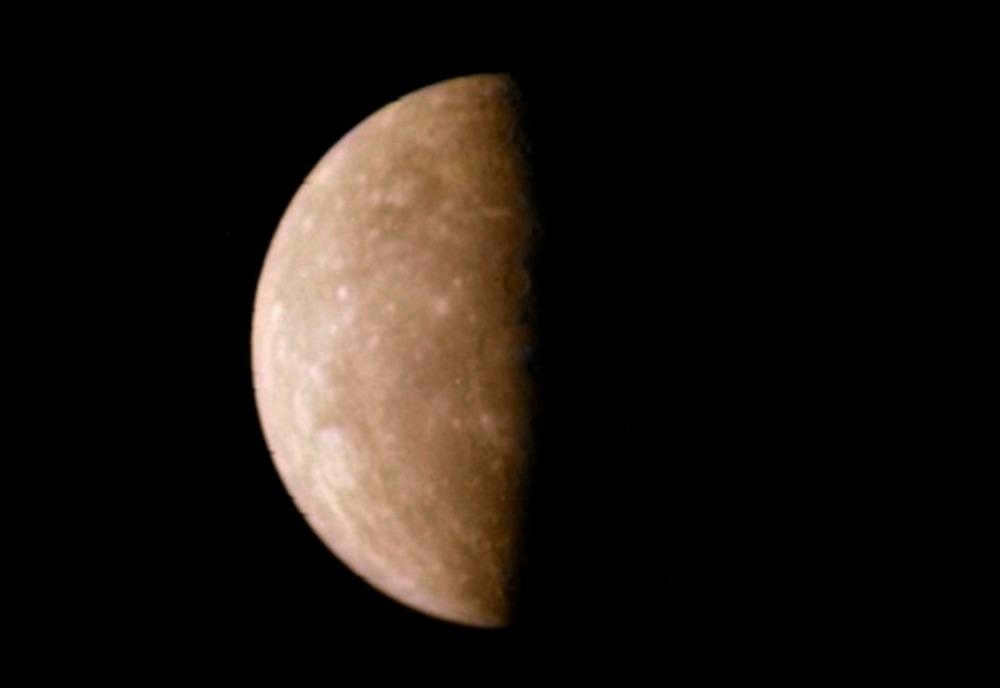

Venus
Venus has a yellow-white color, which is attributed to the presence of a thick layer of clouds composed of sulfuric acid.
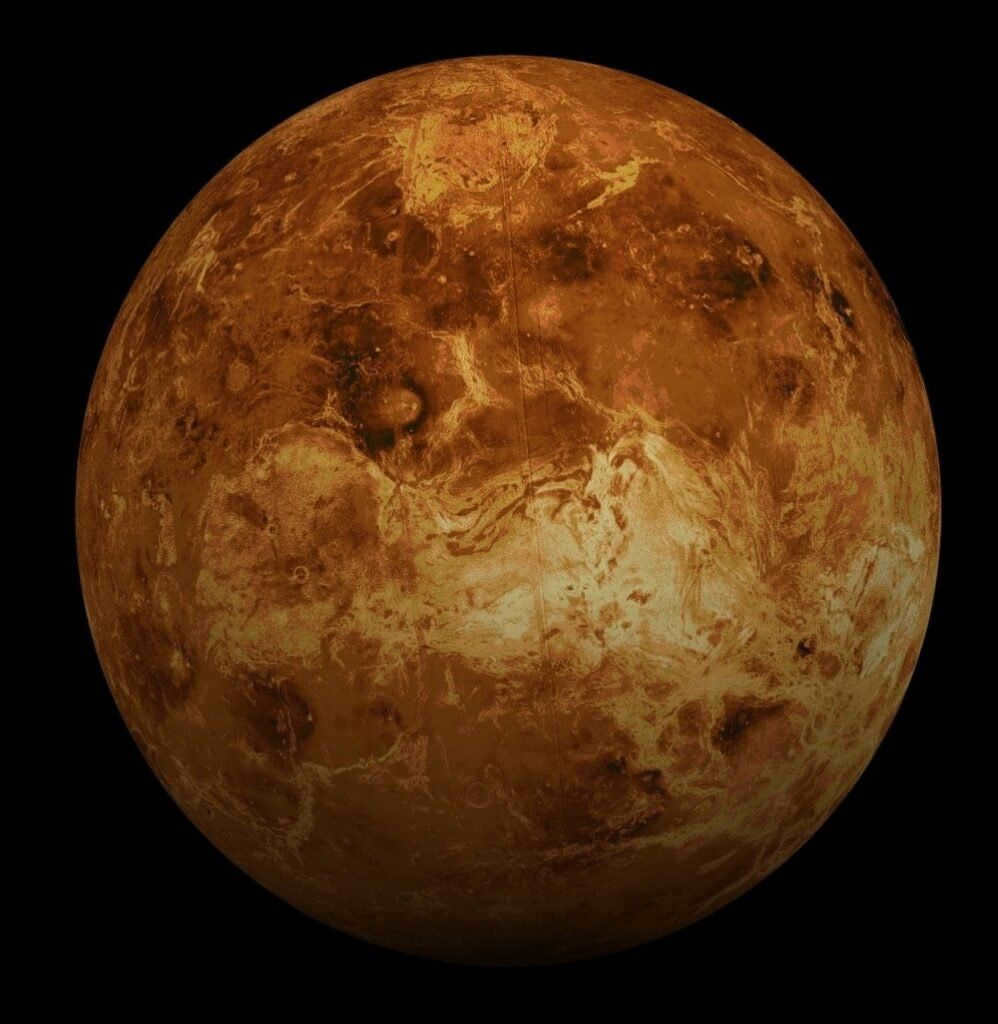
Terra
The shade is a pale blue. The planet’s distinct hue is derived from its vast oceans and atmosphere. However, when observing the landmasses, one can observe shades of brown, yellow, and green.
When viewed from afar, our planet appears as a serene blue orb.
The hue is red-orange. The celestial body is abundant in iron oxides, resulting in the characteristic coloration of the soil.
Jupiter
The hue is orange with white components. The orange color is attributed to the presence of ammonium hydrosulfide clouds, while the white elements are a result of ammonia clouds. There is no solid terrain.
Saturn
The hue is a pale yellow shade. The planet’s crimson clouds are enveloped by a delicate mist of ivory-hued ammonia clouds, creating the perception of a light yellow shade. There exists no firm surface.
Uranus
The hue is a faint azure shade. Methane clouds possess a distinctive tint. There exists no solid surface.
Neptune
The hue of Neptune is pale blue. Similar to Uranus, it is enveloped with methane clouds, but due to its greater distance from the Sun, it gives off a more somber impression. This celestial body lacks a solid surface.
Each planet possesses a singular inherent color. No other alternatives exist! In the event that you encounter an image displaying a different hue, it is undoubtedly a counterfeit and a testament to the artistic prowess of a skilled graphic designer.

The hue is a mixture of gray and brown. Due to the absence of a significant atmosphere, the naked eye perceives the planet’s rocky terrain in its unfiltered state.
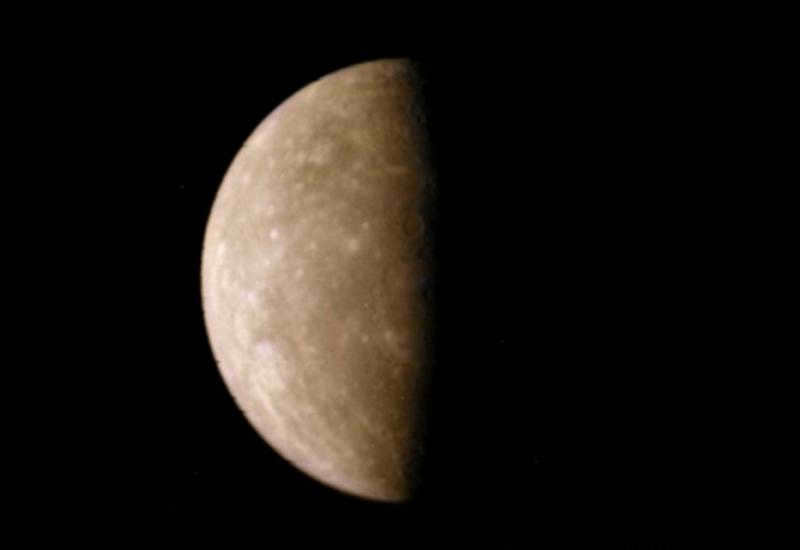
Mercury is often portrayed as a solid shade of gray, an erroneous depiction.
Venus
The surface itself is obscured by a dense layer of sulfuric acid clouds, giving Venus a pale yellow hue that conceals its true color.
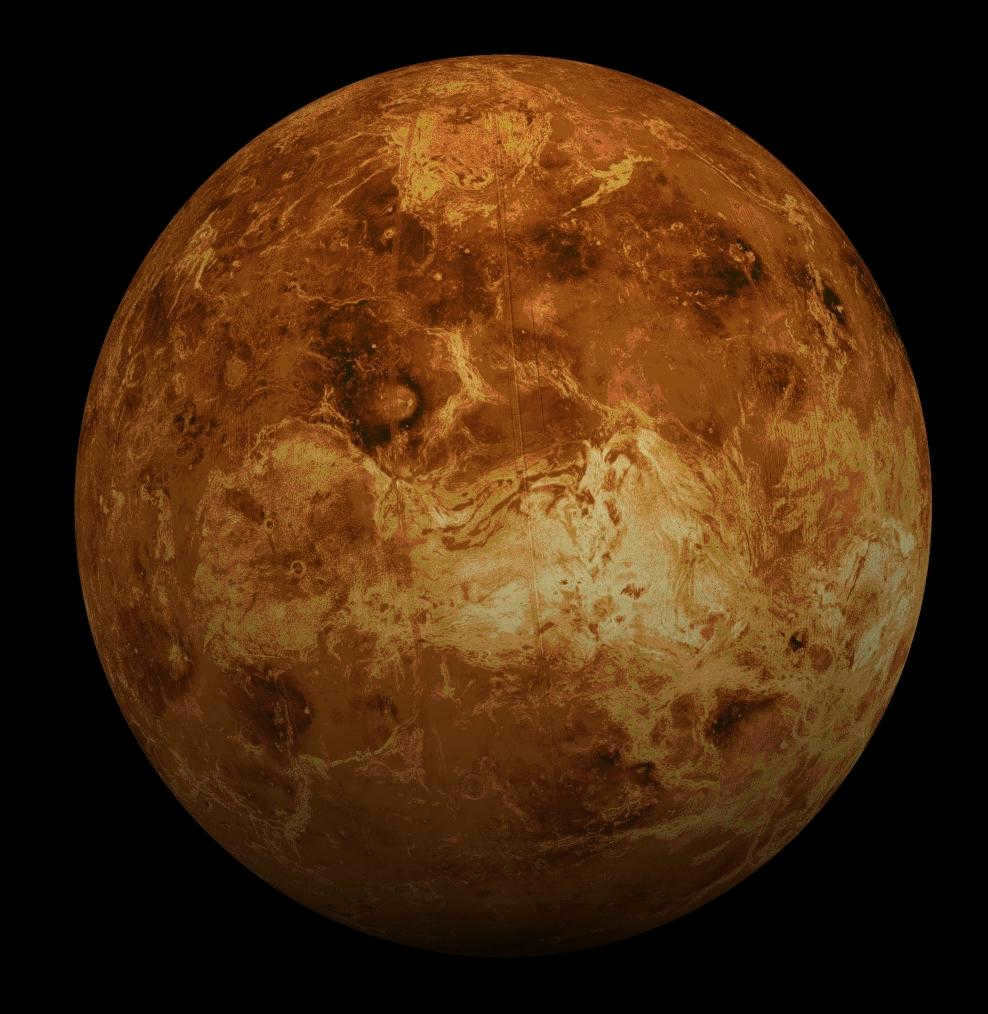
Two Soviet probes have been sending back pictures from the surface, and it appears to be a shade of dark brown.
Earth
The presence of the ocean and the scattering of light by the atmosphere give the planet a predominantly blue color, with white “patches” in the form of clouds.
The landmass exhibits a variety of colors including yellow, brown, and green, making Earth a truly diverse planet.
Mars
Mars is primarily characterized by its reddish-brown color, although there are also some areas that appear darker, as well as white ice caps.
The planet gets its red hue from the presence of iron oxide dust in the atmosphere, which eventually settles on the surface.
Jupiter
Jupiter, on the other hand, has an orange-brown color with white streaks. The orange color of its clouds is due to the presence of ammonium hydrosulfide, while the white color is caused by ammonia impurities.
Saturn
The planet’s red clouds are blanketed with a white haze of ammonia, resulting in its distinct light yellow hue.
Meanwhile, at the planet’s north pole, the clouds exhibit a pale blue color due to variations in temperature.
Uranus
Uranus appears pale blue as a result of its methane clouds. In certain images, a greenish tint is applied to differentiate it from Neptune.

